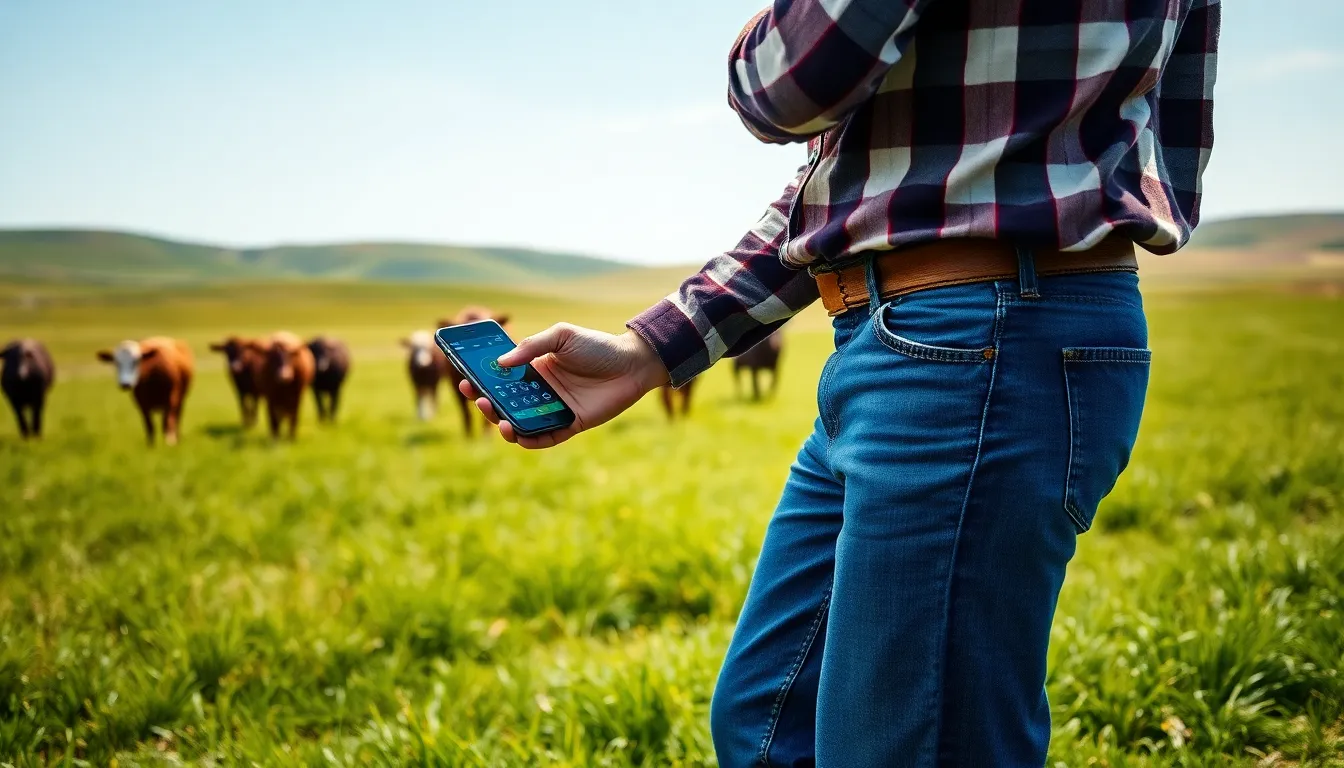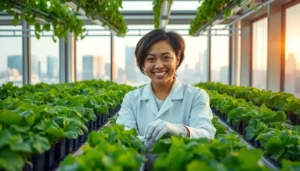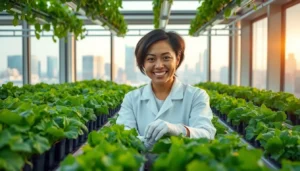Table of Contents
ToggleIn the bustling world of modern farming, keeping tabs on livestock can feel like herding cats—impossible and slightly chaotic. Enter IoT livestock tracking, the superhero solution farmers didn’t know they needed. With sensors and smart tech, farmers can now monitor their animals’ health and location in real-time, turning the age-old practice of livestock management into a high-tech affair.
Overview Of IoT Livestock Tracking
IoT livestock tracking employs advanced technology to enhance animal management. Sensors attached to livestock collect data on location, health, and behavior. This technology enables farmers to monitor their livestock in real-time and receive immediate updates, significantly improving decision-making processes.
Location tracking provides insights into grazing patterns, helping farmers optimize pasture usage. Health monitoring systems detect changes in vital signs, which leads to early intervention and reduces the risk of disease outbreaks. Analytics platforms can interpret this data, allowing for tailored care strategies based on individual animal needs.
Farmers appreciate the transparency brought by IoT technology. Increased access to information empowers them to make informed choices about feeding, breeding, and veterinary care. In addition, IoT solutions integrate with existing farm management systems, creating a cohesive operational framework.
Cost-effectiveness emerges as another benefit. Reduced labor costs arise from automation and efficiency improvements. Monitoring livestock remotely minimizes the need for constant physical checks, allowing farmers to allocate resources more effectively.
Moreover, IoT livestock tracking supports sustainability initiatives. By optimizing resource use, farmers can reduce waste and improve overall productivity. Many IoT solutions also enable compliance with regulatory requirements, facilitating record-keeping and reporting.
Innovation in IoT technology constantly introduces new features. Enhanced connectivity and data security contribute to more reliable tracking systems. As more farmers adopt these technologies, IoT livestock tracking continues to evolve, aiming to meet the future demands of agricultural practices.
Benefits Of IoT Livestock Tracking
IoT livestock tracking offers significant advantages for farmers. Enhanced visibility into animal health and improved operational efficiencies are two major benefits.
Enhanced Animal Health Monitoring
Monitoring animal health becomes more precise with IoT technology. Wearable sensors provide real-time data on vital signs, enabling early detection of illnesses. Tracking behavior and activity levels allows farmers to identify issues quickly. Increased frequency of health assessments occurs, leading to timely veterinary intervention. Consistent monitoring leads to healthier livestock and reduced mortality rates. Data analytics also provide insights into nutritional needs, optimizing feeding strategies. Modern farms equipped with IoT systems manage animal welfare more effectively, ensuring better outcomes.
Improved Operational Efficiency
Operational efficiency sees a boost through IoT livestock tracking. Automation of routine tasks reduces the need for manual labor, cutting costs significantly. Accurate location tracking helps in efficient grazing management and minimizes time spent locating animals. Streamlined communication between farm management and IoT devices enhances decision-making processes. Farmers can allocate resources effectively, optimizing yields and minimizing waste. Additionally, data integration with farm management systems improves overall productivity. Such efficiencies not only support economic sustainability but also foster a high-tech farming environment.
Technologies Used In IoT Livestock Tracking
IoT livestock tracking employs various technologies that enhance the management of livestock. These include GPS tracking and wearable sensors, both vital for efficient monitoring.
GPS Tracking
GPS tracking provides accurate location data for livestock. Farmers use this technology to monitor animal movements in real-time. Through an integrated GPS system, individuals can prevent livestock from straying and ensure their safety. This tracking system also supports pasture management by optimizing graze patterns, increasing efficiency. An effective GPS solution allows for alerts when animals leave designated areas, drastically reducing the chances of loss or theft.
Wearable Sensors
Wearable sensors play a crucial role in monitoring animal health and behavior. Sensors attach to collars or harnesses, collecting vital signs such as temperature and heart rate. Data gathered helps farmers detect illness early, resulting in timely interventions and better health outcomes. These sensors also track activity levels, providing insights into each animal’s well-being. By gathering this information, farmers make informed decisions regarding nutrition and husbandry practices. Overall, wearable sensors increase productivity and promote a healthier livestock environment.
Challenges In Implementing IoT Livestock Tracking
Implementing IoT livestock tracking presents several challenges that can affect adoption and effectiveness. These hurdles include data privacy concerns and infrastructure limitations.
Data Privacy Concerns
Privacy issues arise when utilizing IoT devices for livestock tracking. Sensitive data related to animal health and location may be exposed to unauthorized access. Ensuring robust encryption and secure data storage is essential to mitigate these risks. Moreover, farmers must comply with data protection regulations, which add another layer of complexity. Addressing these concerns fosters trust among users and promotes broader acceptance of IoT solutions.
Infrastructure Limitations
Infrastructure plays a crucial role in the effectiveness of IoT livestock tracking. Many rural areas lack reliable internet connectivity, which can hinder real-time monitoring. Limited access to power sources for devices also impacts functionality and longevity. Farmers may encounter high costs when enhancing infrastructure to support IoT systems. Investing in reliable infrastructure upgrades facilitates efficient tracking and improves the overall success of IoT implementations in livestock management.
Future Trends In IoT Livestock Tracking
Emerging technologies promise to revolutionize IoT livestock tracking. Advanced analytics will enable predictive insights, enhancing decision-making. Integration with artificial intelligence will streamline data interpretation, making it easier to spot trends and anomalies in animal behavior.
Smart collars equipped with enhanced sensors will capture more detailed health metrics. These innovations will support real-time health monitoring, allowing farmers to act swiftly on any detected issues. Automated alerts, triggered by sensor data, will notify farmers of significant changes, minimizing risks.
Blockchain technology offers a secure method for tracking livestock history. Transparency in animal health and movement records will be crucial for building trust in supply chains. Such advancements will help farmers authenticate their practices, adding value to their products.
Cloud platforms will evolve to support increased data storage and processing capabilities. The ability to analyze vast amounts of data in real-time will lead to better resource management. Data sharing among farmers will foster collaboration and improve overall industry standards.
Sustainability initiatives will continue to influence IoT livestock tracking developments. Smart irrigation systems will optimize water usage based on livestock needs, contributing to environmental conservation. By adopting eco-friendly practices, farmers can reduce their carbon footprint while enhancing productivity.
Additionally, the rise of mobile applications will simplify user experiences. Farmers will access vital information via smartphones or tablets, making livestock management more accessible. Improved user interfaces will encourage more producers to embrace IoT solutions.
Next-generation connectivity, such as 5G, will enhance the reliability of IoT networks. This faster communication will strengthen real-time monitoring capabilities. As a result, livestock management will become more efficient, supporting better animal welfare and productivity in the industry.
Conclusion
IoT livestock tracking is undeniably transforming the landscape of modern farming. By integrating advanced technologies into livestock management, farmers can enhance animal health monitoring and improve overall operational efficiency. The ability to access real-time data empowers farmers to make informed decisions that benefit both productivity and animal welfare.
As the agricultural sector continues to embrace IoT solutions, the focus on sustainability and resource optimization will only grow. The ongoing advancements in connectivity and data security will further solidify IoT livestock tracking as an essential tool for the future of farming. With these innovations, farmers can look forward to a more efficient and sustainable approach to livestock management.








